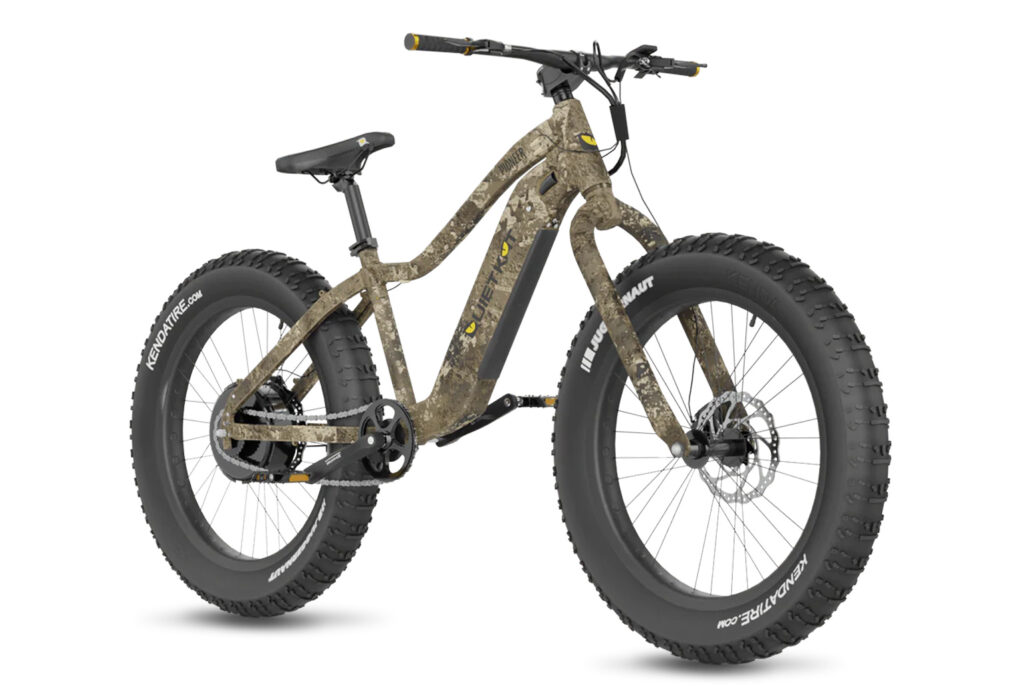E-Bike Overview
The QuietKat Pioneer’s high-torque 750W rear hub Bafang motor delivers direct power to the rear wheel without relying on the chain. This enables you to achieve consistent power in all gears, with little maintenance needed.
This model also features an optimized set of Tektro two-piston mechanical disc brakes to ensure greater control when braking across a wide variety of surfaces. Puncture-resistant tire casings also enable optimal safety when hitting the road or trails.
The brand also does a great job of styling this e-bike to appeal to a wider range of buyers — not just those who require an e-bike for hunting purposes. While the camouflage patterns help the e-bike fit into a wilderness setting, color options such as sandstone and charcoal are catered toward those looking for a versatile product that just as easily looks at home in an urban setting as it does while camping, fishing, or exploring the trails.
Reasons to Buy
The two biggest advantages of the QuietKat Pioneer are its price range and rugged outdoor durability. QuietKat has long been a pioneer in legendary e-bikes built for adventurers, and its top-of-the-range models (like the Rubicon e-bike at $7,499) don’t come cheap. However, with the latest product offering, the Pioneer allows outdoor enthusiasts who are new to e-biking an affordable entryway into the lifestyle.
The brand is also known for producing low-maintenance, highly durable, and tough outdoor e-bikes made to last. With features such as a heavy-duty and rust-resistant frame, as well as all-terrain fat tires and an optimized set of Tektro two-piston mechanical disc brakes, the Pioneer is no exception.
The brand’s lifetime frame warranty also gives even the most daring of adventurers the ultimate peace of mind.
Things to Consider
While the QuietKat Pioneer’s rear hub motor supports the brand’s desire for a low-maintenance product, a rear hub motor does come with some general drawbacks. It can add a lot more weight to an e-bike, especially at the rear. Furthermore, it can make changing the back tire slightly more challenging in the event of a rear puncture.













